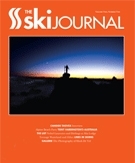Ski Boot Fitting and Custom Foot Beds
When it comes to ski gear, most experts and even many lay skiers agree that boots are the most important equipment selection. While the wrong ski for the job will prevent you from having maximum enjoyment, normally it will not necessarily hurt you in the quite literal way that an ill-fit boot can. While I believe that every piece of the gear jigsaw puzzle needs equal attention and consideration, I can attest to the fact that a poorly fit boot can effect your enjoyment while skiing and perhaps even your number of ski days.
Boot fit issues plagued my days spent earning turns these past few years. My first Alpine Touring boot was a Garmont G-Ride that always felt too tight and had three major pressure points. My flat foot rebelled without a supported heel. But I got the boots on the cheap and damned if I was going to spend more than half of what I paid for the boots on a custom fitting. Wrong decision. While touring, I suffered through poor fit and opted for lift serviced in my alpine boots more often than I had planned. One look at my G-Rides sitting next to my alpine boots was usually all it took. The AT boots got left behind more often than not.

